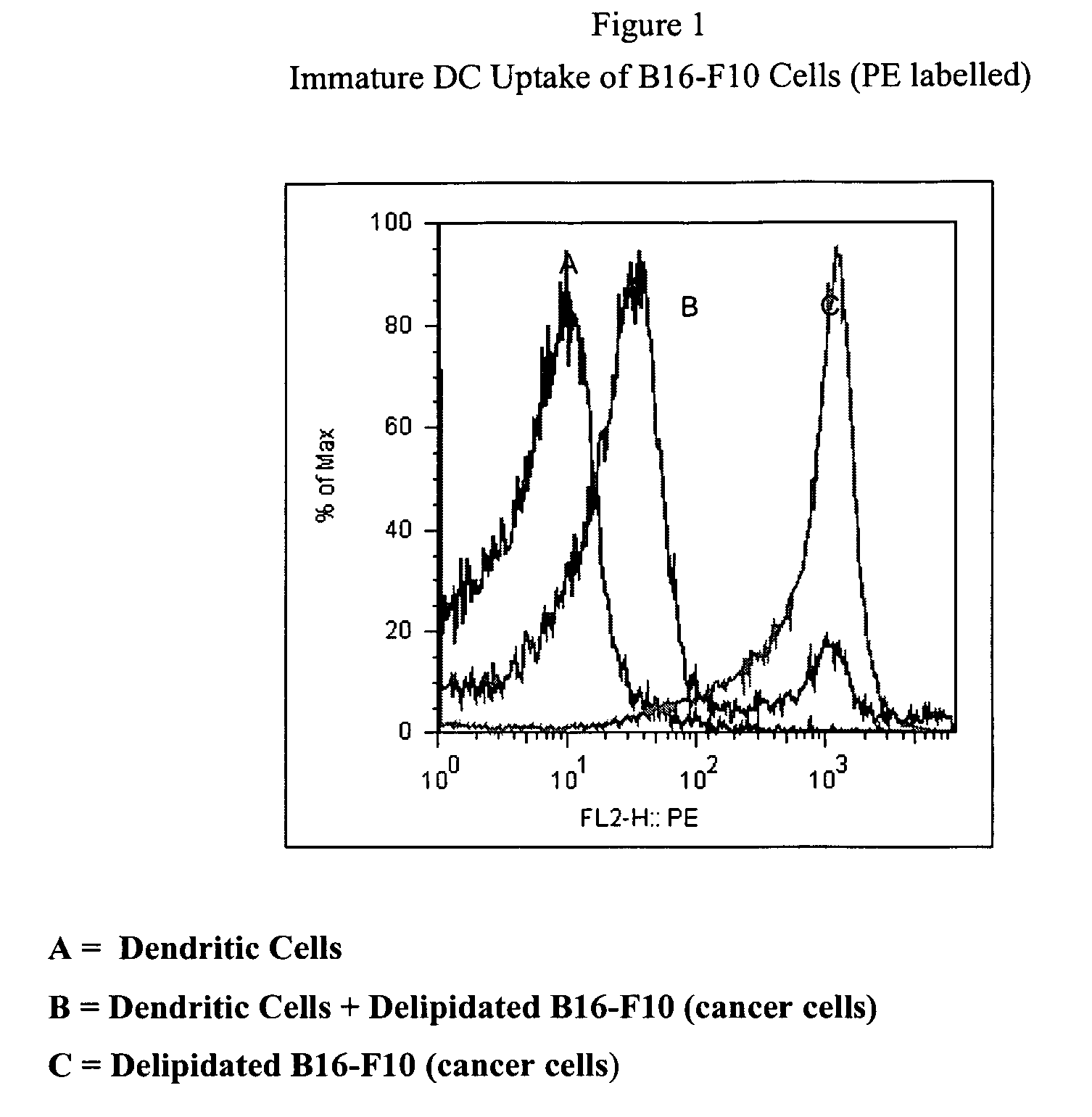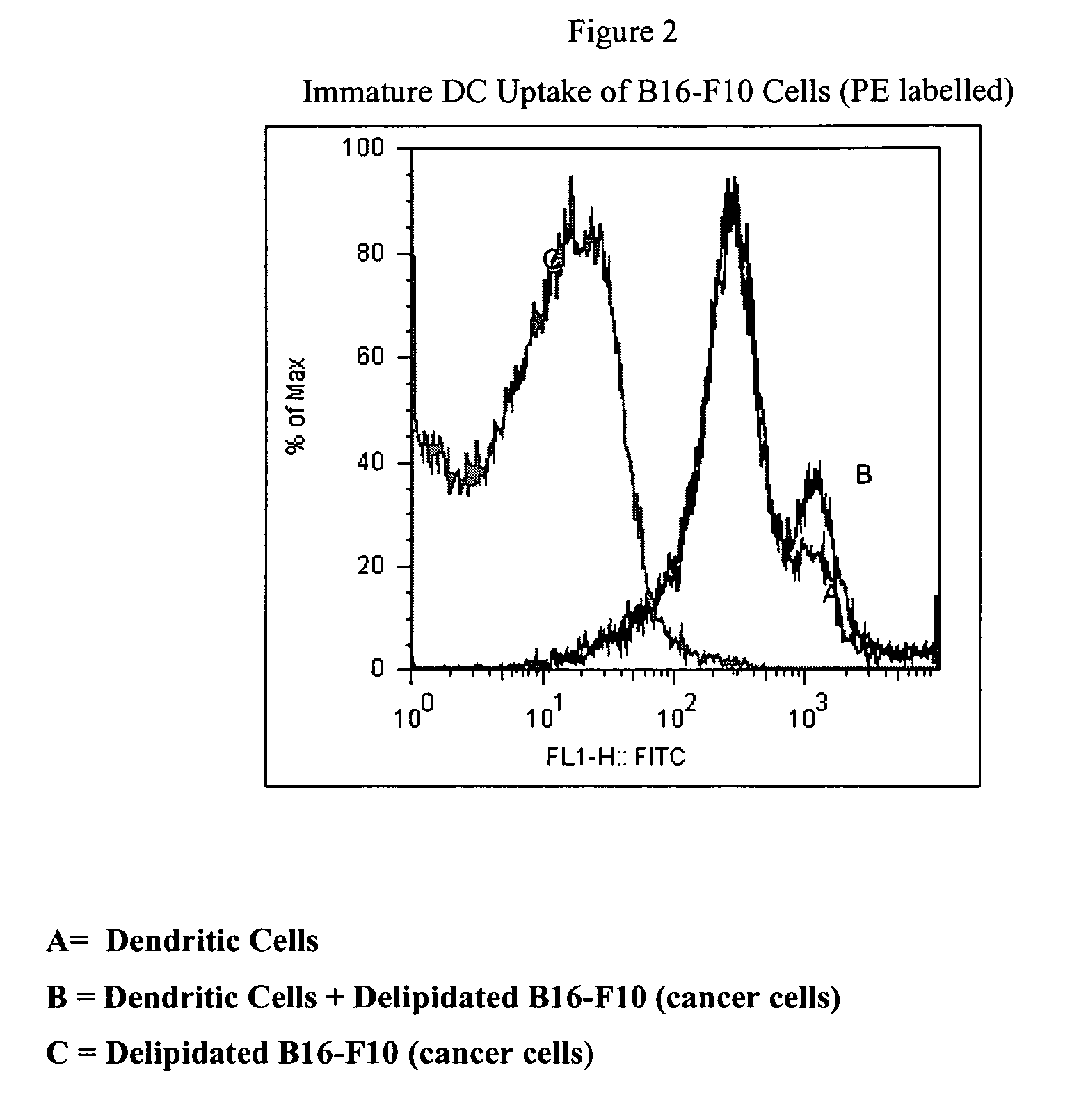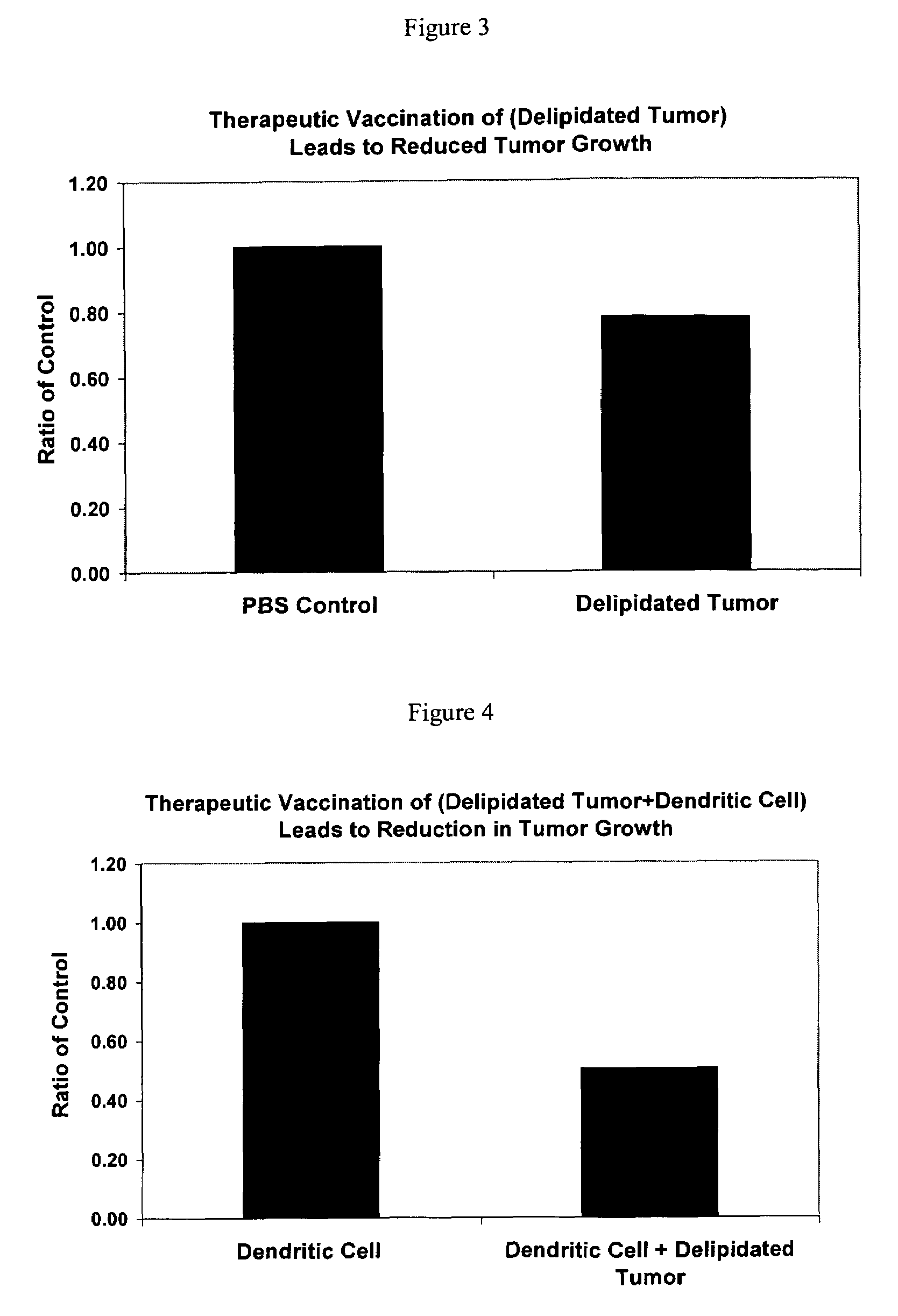Method of treating cancer cells to create a modified cancer cell that provokes an immunogenic response
a cancer cell and immunogenic technology, applied in the direction of immunological disorders, drug compositions, antibody medical ingredients, etc., can solve the problems of difficult to target, difficult to eliminate cancer from a patient's body, and inflict an enormous economic burden on society, so as to achieve simple, effective and efficient methods, and delay the onset of the disease , the effect of delaying the progression
- Summary
- Abstract
- Description
- Claims
- Application Information
AI Technical Summary
Benefits of technology
Problems solved by technology
Method used
Image
Examples
production — embodiment one
Vaccine Production—Embodiment One
[0101]The modified cancer cell, which is at least partially or substantially delipidated and has exposed tumor associated antigens, has immunogenic properties and is combined with a pharmaceutically acceptable carrier to make a composition comprising a vaccine. This vaccine composition is optionally combined with an adjuvant or an immunostimulant and administered to an animal or a human. Both autologous and non-autologous vaccines, including combination vaccines, are within the scope of the present invention. It is to be understood that vaccine compositions may contain more than one type of modified cancer cell or component thereof, in order to provide protection against complex cancers. Such combinations may be selected according to the desired immunity.
Vaccine Production Employing Dendritic Cells and Delipidated Cancer Cells—Embodiment Two
[0102]Dendritic cells can be used to induce an antitumoral response within a patient. Dendritic cells are hemat...
example 1
Delipidation Protocol
[0120]Delipidation of cancer cells can be achieved as follows. Cancer cells shown in Table 2, for example at approximately 8×105 cells in phosphate buffered saline (PBS) were added to a final volume of 0.05% Triton X-100 plus 3% diisopropylether (DIPE). The cancer cells were resuspended in 1 ml saline. 0.05% Triton X-100 and DIPE was added to a final concentration of 3%. DIPE was added as 100% (30 μl of neat DIPE) to the cancer cell suspension and 5 μl of neat (100%) Triton was also added to make a final volume of 1 mL cancer cell suspension. The solvent mixture can also be made independently and then added to the cancer cell suspension. The cancer cell suspension was mixed end-over-end at room temperature for 20 minutes. The sample was subsequently centrifuged at 1000 rpm for 1 minute. Residual solvents were removed through a charcoal column. Following the solvent removal step the cell suspension was diluted to a final volume of 2.5 ml. An aliquot of the resusp...
example 2
Total Cholesterol and Total Protein Content
[0122]An aliquot of the resuspension solution from Example 1 was used in a total cholesterol assay. A further aliquot of the resuspension solution from Example 1 was used in a total protein assay using commercially available kits. For example, 50 μl of the resuspension solution from Example 1 was used in a Amplex Red Total Cholesterol Assay (Molecular Probes, Eugene, Oreg.). Another 50 μl of the resuspension solution was used in a total protein assay using the BioRad Total Protein Assay (Bio-Rad Laboratories, Hercules, Calif.). The results from these studies are presented in Table 3 which demonstrates that all delipidated cancer cell lines, regardless of source, were successfully delipidated as observed by the reduction in cholesterol concentration. Clearly, the 3% DIPE-0.05% triton X-100 protocol described in Example 1 efficiently removes lipids from a variety of cancer cells, including the murine cancer cell line B16-F10. Table 3 demonstr...
PUM
| Property | Measurement | Unit |
|---|---|---|
| pressures | aaaaa | aaaaa |
| temperatures | aaaaa | aaaaa |
| temperature | aaaaa | aaaaa |
Abstract
Description
Claims
Application Information
 Login to View More
Login to View More - R&D
- Intellectual Property
- Life Sciences
- Materials
- Tech Scout
- Unparalleled Data Quality
- Higher Quality Content
- 60% Fewer Hallucinations
Browse by: Latest US Patents, China's latest patents, Technical Efficacy Thesaurus, Application Domain, Technology Topic, Popular Technical Reports.
© 2025 PatSnap. All rights reserved.Legal|Privacy policy|Modern Slavery Act Transparency Statement|Sitemap|About US| Contact US: help@patsnap.com



